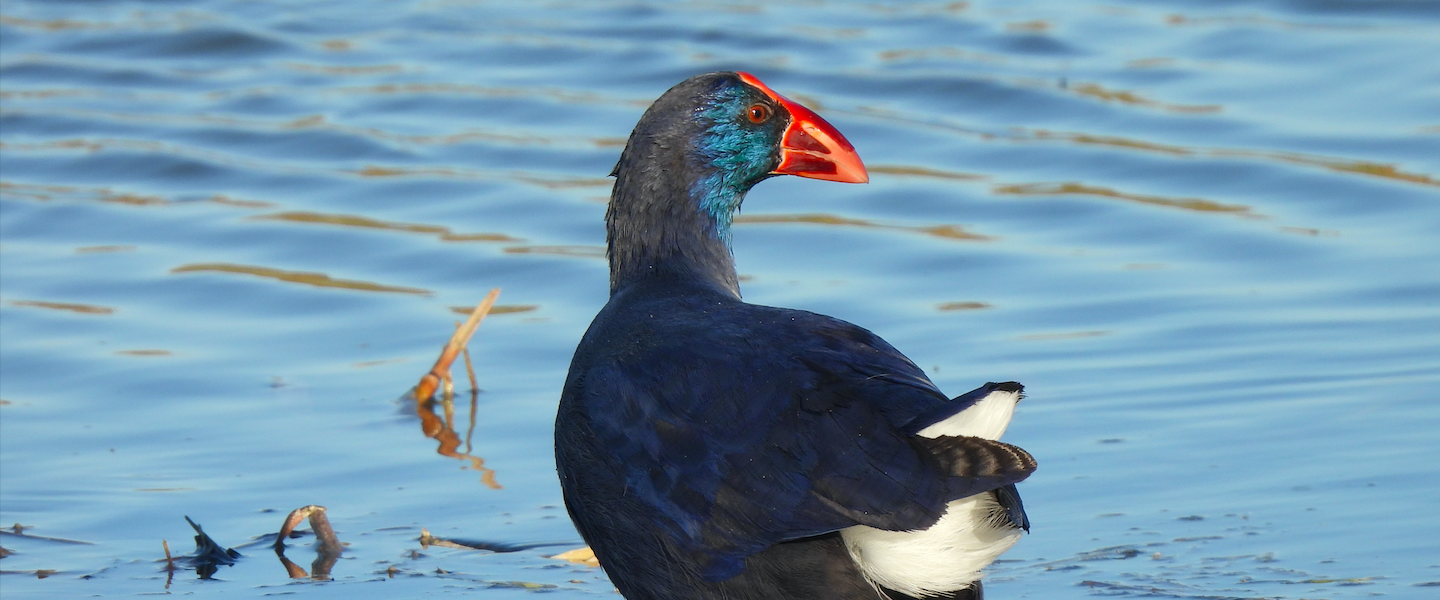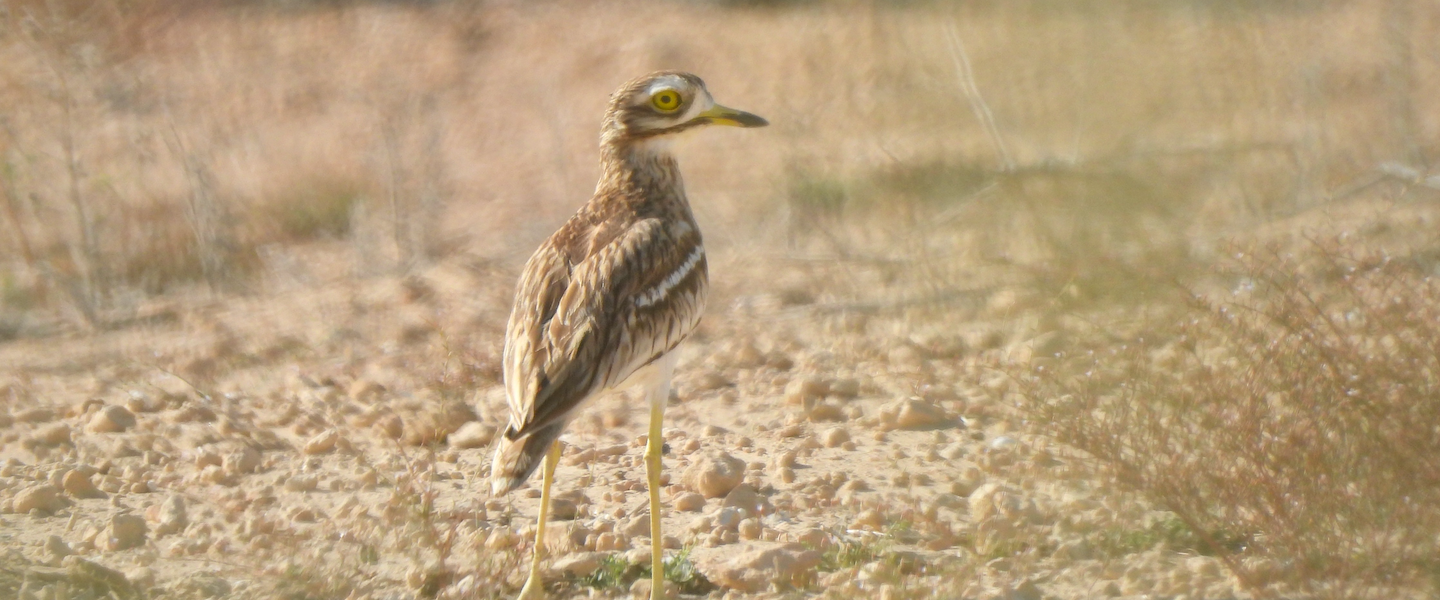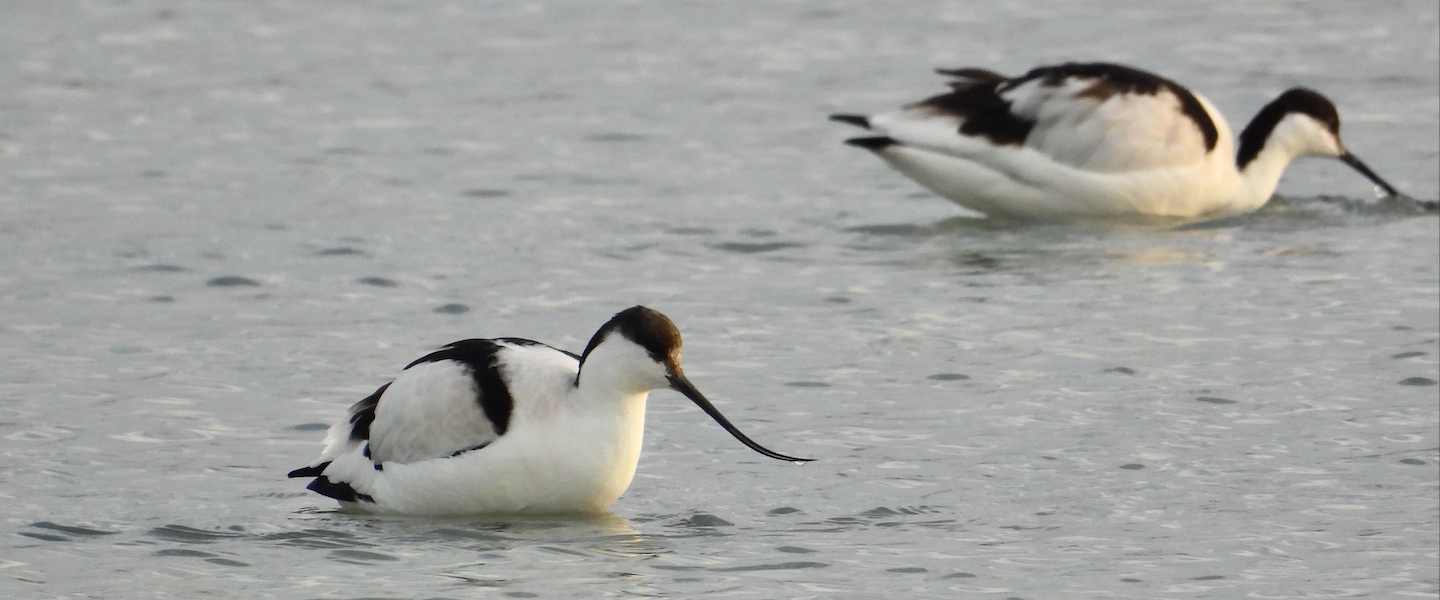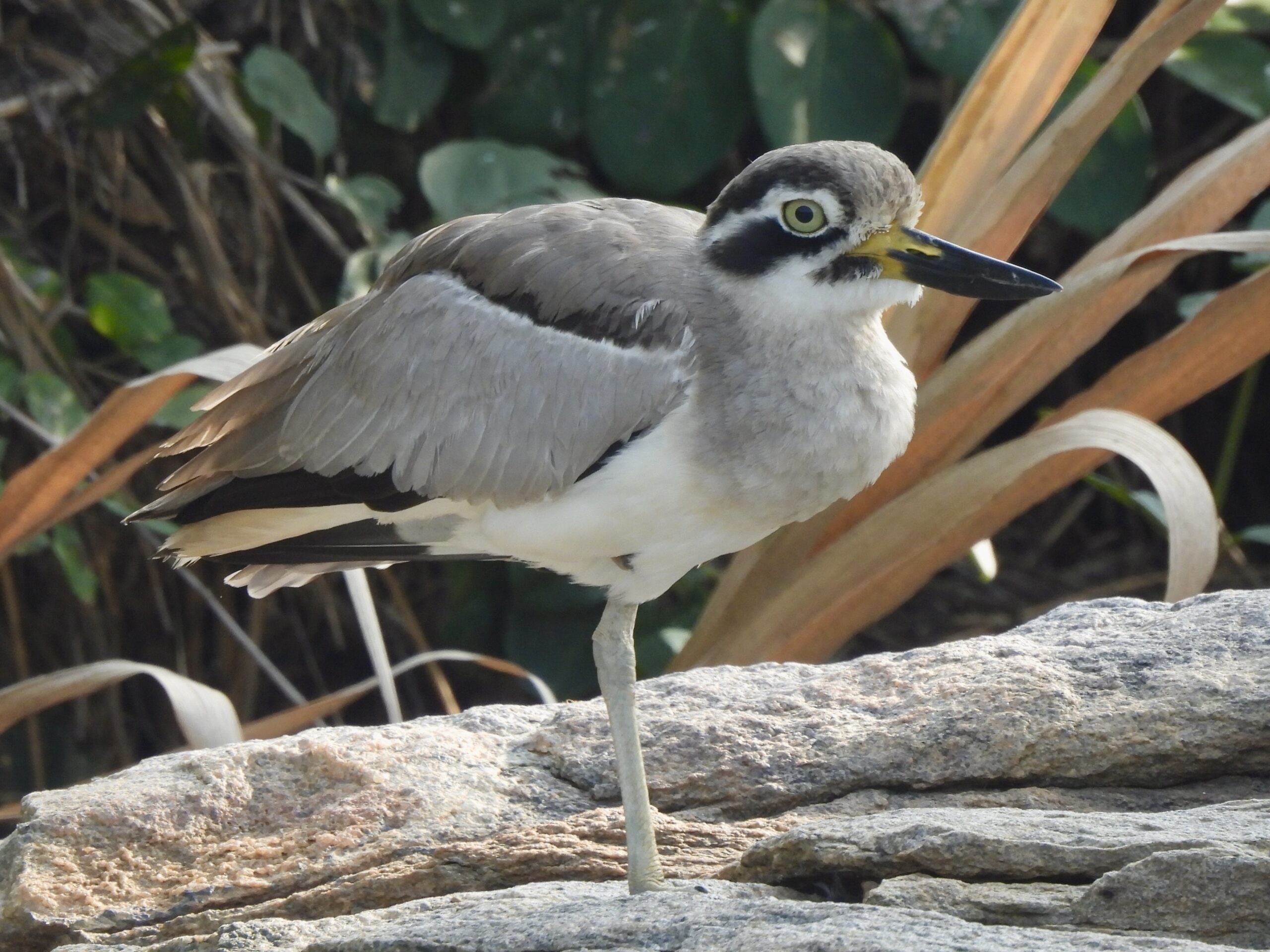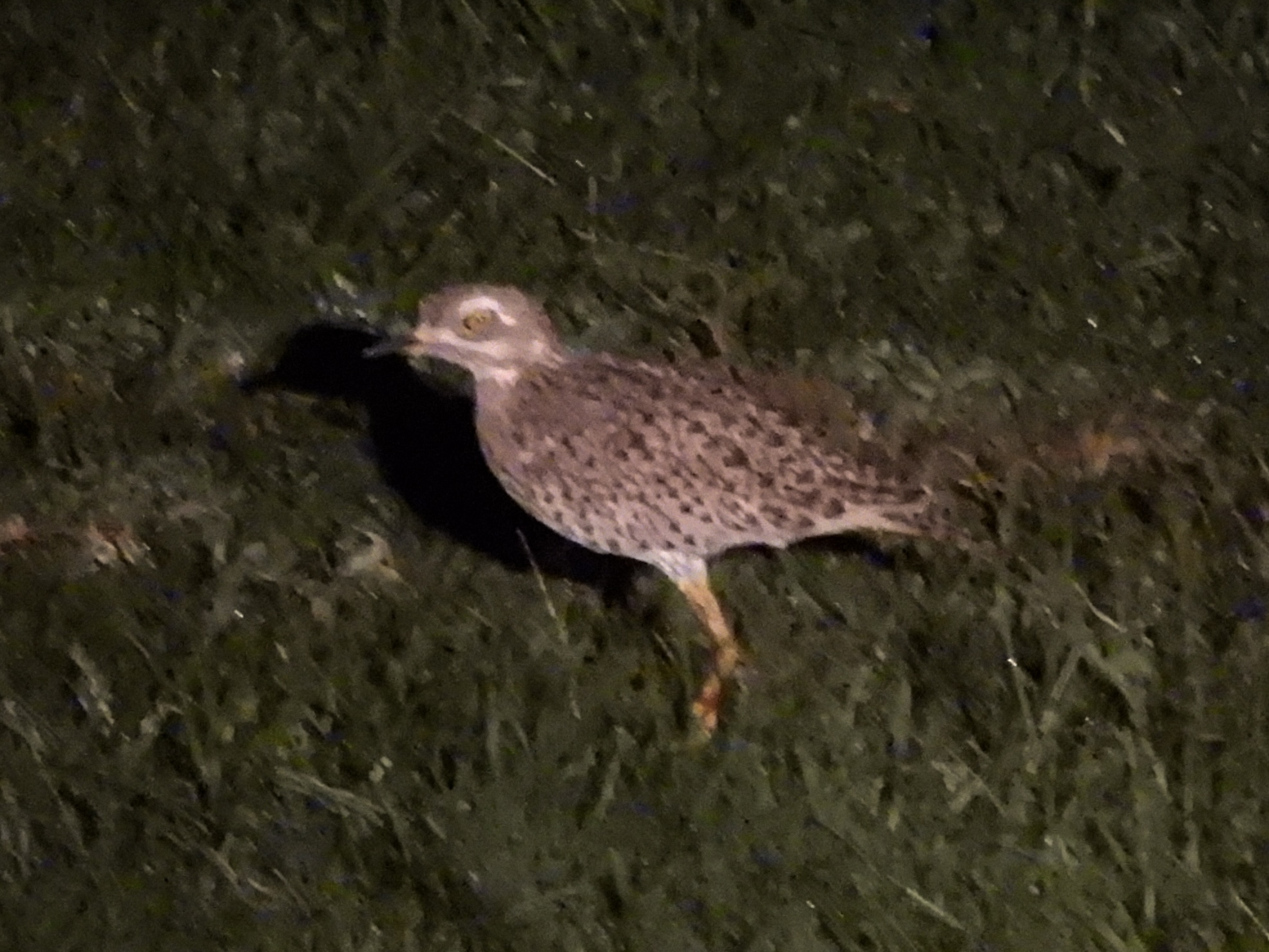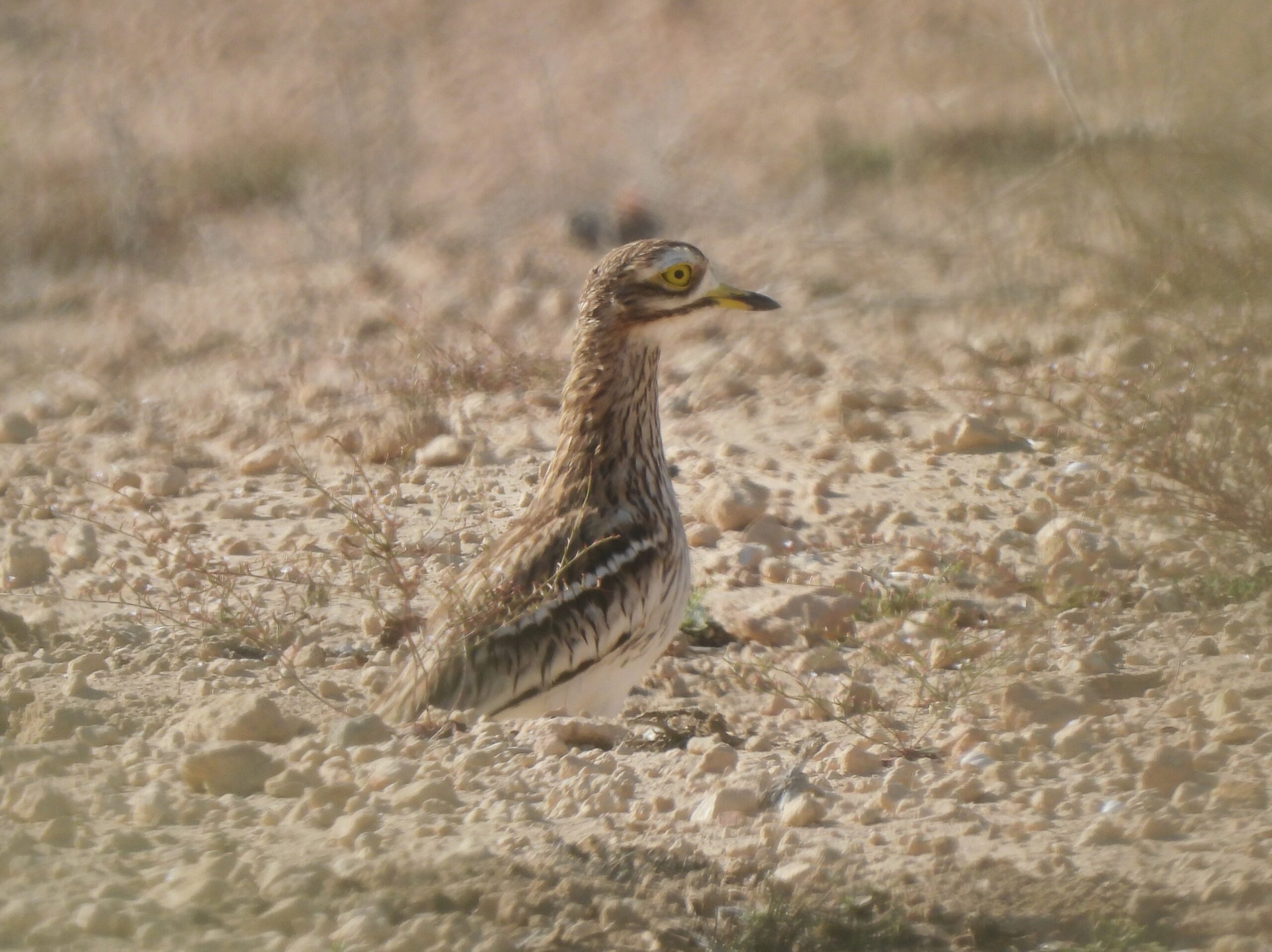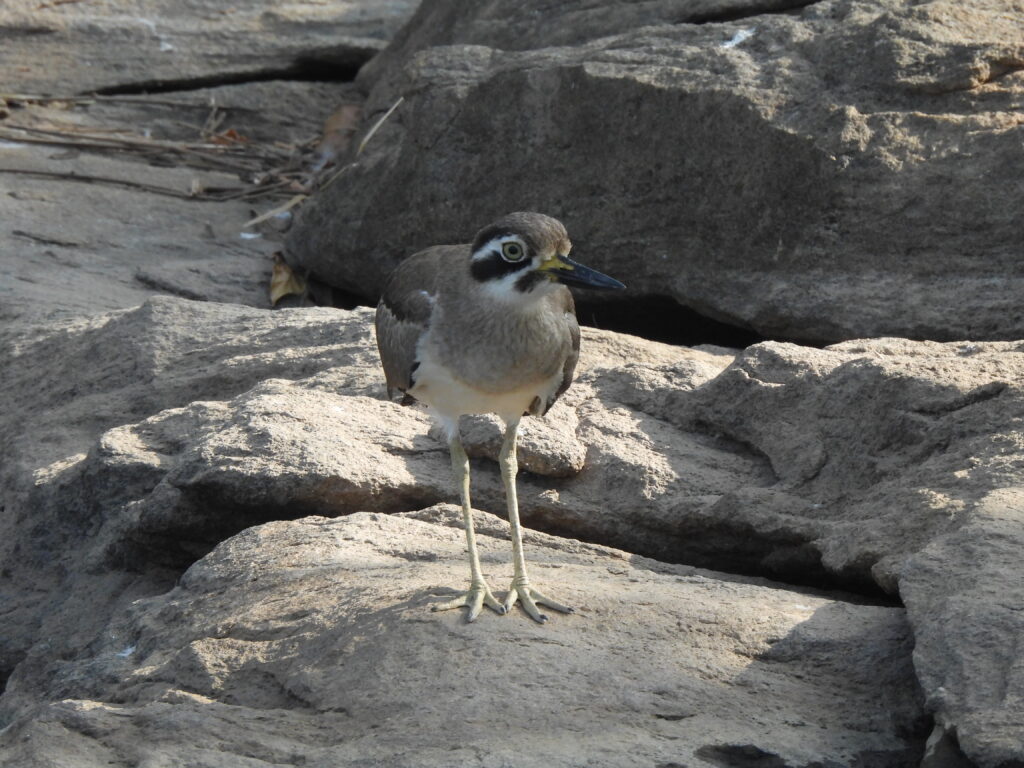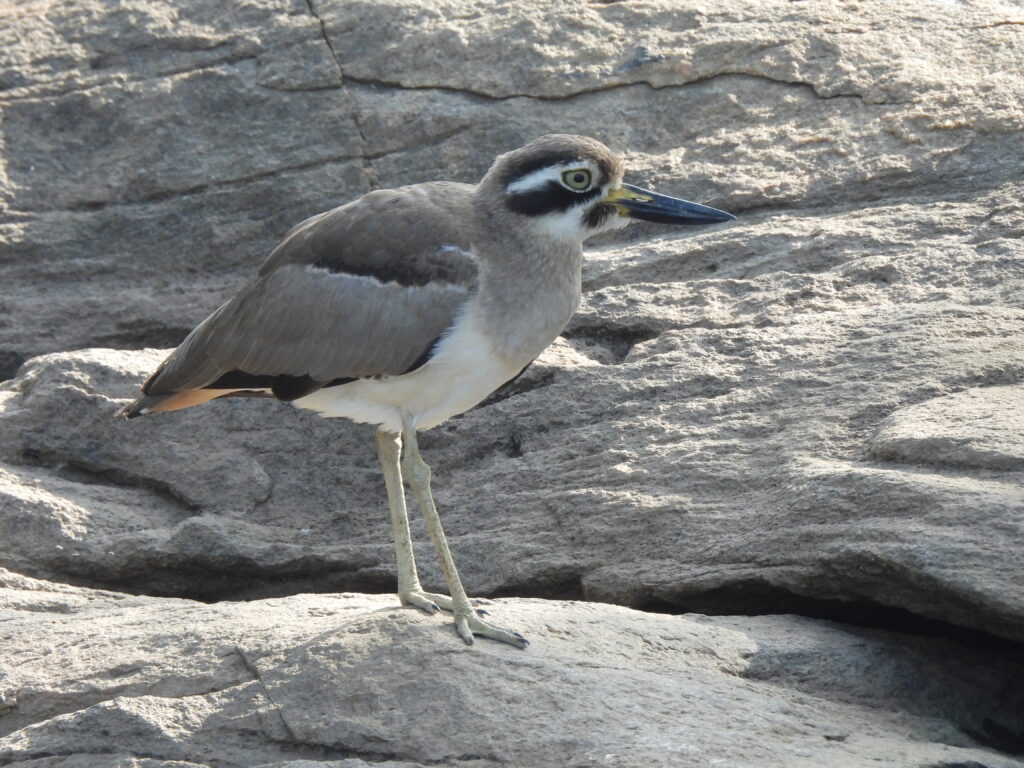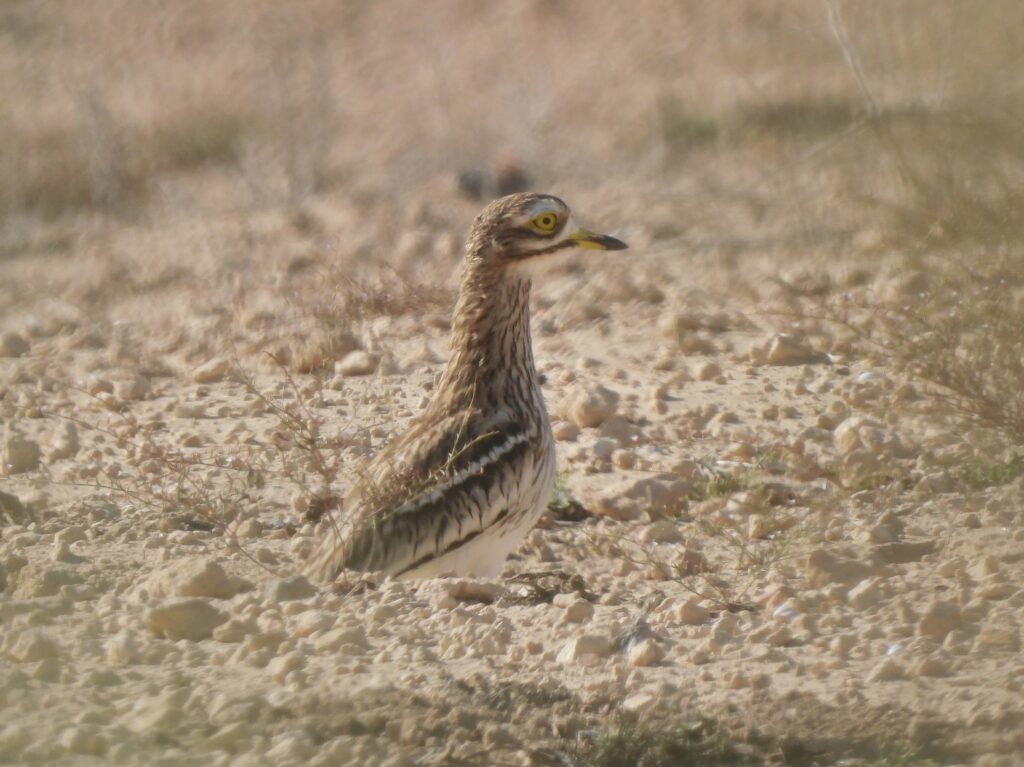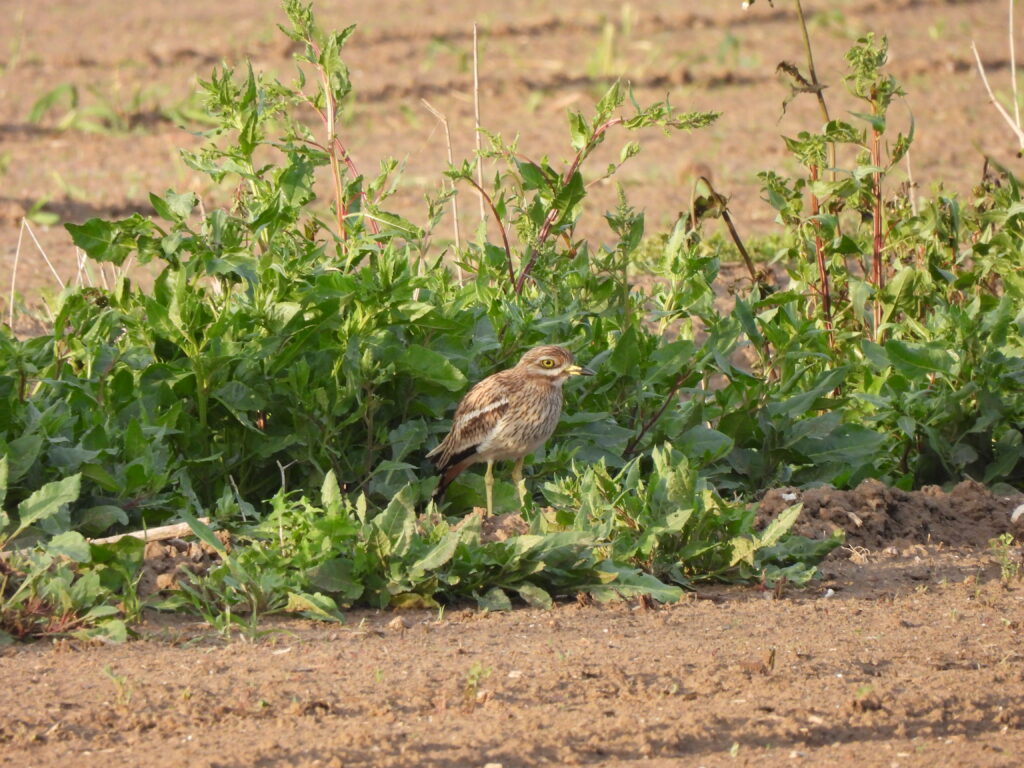The thick-knees (family Burhinidae) are a family of birds belonging to the order Charadriiformes, often regarded as shorebirds. The family includes long-legged, generally nocturnal waders which in some cases forage far from water bodies in arid and semiarid habitats. They show cryptic plumages, large yellow eyes and strong bills. Their name comes from the prominent heels visible on the legs of these birds, and while some species are often known as stone-curlews (especially those in Australia), actual curlews belong to a different family.
The family comprises 9 species belonging to 3 genera. Genus Hesperoburhinus (2 species) occurs in the Neotropics. Genus Esacus (4 species) is distributed along South Asia to Australasia and they are generally known as stone-curlews. Genus Burhinus (6 species) is distributed along the Old World.
Great stone-curlew
Esacus recurvirostris
Large thick-knee occuring at banks of rivers and lakes from far eastern Iran and the Indian Subcontinent to Southeast Asia and Hainan. Its heavy bicolor bill has an angle on the lower mandible making it look upcurved, and is used to feed on crabs and other animals. I have seen this species in south India.
Spotted thick-knee
Burhinus capensis
Resident in grasslands in savannas across Subsaharan Africa, where it often remains unseen thanks to its cryptic plumage. As other members of the family, they forage at night time and do not depend on water bodies. I have observed this species in Kenya during night game drives.
Eurasian stone-curlew
Burhinus oedicnemus
Only member of the family found in Central Asia and Europe, where disjunct populations occupy the Mediterranean Basin north to Great Britain and Poland, some of which migrating south to Africa during winter. Often simply known as thick-knee or stone-curlew within its range. This species is abundant in dry cropland and scrub in Alicante all year round, where its haunting calls are a familiar sound at night.

